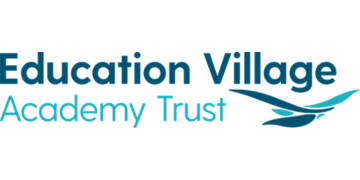This year, schools face a significant shift in how they support their students’ career-readiness. From this week, the updated Gatsby Benchmarks, adopted into government guidance, take effect; careers education is no longer an optional addition but is to be woven into the fabric of every school’s learning culture.
Over the summer, I joined Year 10 students in Liverpool for a one-day workplace experience with a housebuilder. When asked to calculate the materials needed for a building task, students saw maths come to life.
In London, I spent time with Year 9s who worked alongside accountancy and construction consultants, giving them a cross-sector experience through a project based on real challenges both companies faced.
Both experiences were eye-opening, not just for the students but for all of us who saw how quickly young people engage and develop essential skills for employment when learning is connected to the real world.
Both also confirmed the findings of our survey of more than 300,000 students, which we will be publishing later this term.
Early insights indicate encouraging gains in creativity and problem-solving skills, which drive innovation, resilience and adaptability.
However, confidence in teamwork and leadership is decreasing, suggesting that young people are becoming less assured in how they work with others.
This is a gap that concerns me, and one I believe can and must be closed through schools and employers working even more closely together.
The evidence is clear that great careers education transforms futures, so here are my top four tips for making the most of the new framework and ensuring every young person benefits from it.
Prepare for change
Work experience is no longer confined to a single block placement in Year 10. From September 2025, students should be accessing one week’s worth of experience across Years 7 to 9, and a further five days in Years 10 and 11.
This means structured activities, employer projects, visits or virtual encounters in key stage 3 must give insight into real work so that by key stage 4, students have experienced multiple placements across different sectors.
This earlier and broader exposure allows young people (particularly those unsure of their career path) to explore more industries while developing confidence in teamwork, communication and problem-solving.
CEC has developed a flexible approach, including a framework of learning outcomes for pre-16s, to support schools in embedding this shift.
Make encounters meaningful
The new guidance places an emphasis on the quality of employer encounters. These go beyond merely observing. Students should understand the purpose of the experience, interact with a range of employees, take on real tasks, receive feedback and, crucially, have space to reflect on what they have learned.
Done well, these experiences build both insight and aspiration, linking classroom learning to the skills and behaviours that underpin success in life and work.
Put parents and carers at the heart
Parents and carers remain the most influential voices in career choices, and the updated guidance positions them as active partners.
You can embed this into your strategy by hosting careers-focused parent evenings, sharing family quizzes, conversation guides and classroom-ready resources for educators.
The goal is to ensure families are confident, informed partners in guiding young people’s choices.
Tap into your local Careers Hub
Engagement with Careers Hubs is now at record levels; 93 per cent of schools and colleges participate, and those who do deliver almost double the amount of careers activity than those who don’t.
Careers Hubs link educators with employers, training, resources and peer support, making it easier to meet statutory guidance and ensuring no young person misses out.
Encouragingly, schools and colleges have significantly increased their Gatsby Benchmark-related activities, with a quarter now achieving all eight.
The benchmark measuring students’ experiences of workplaces rose by 8 percentage points last year. This progress is contributing to lower NEET numbers, delivering an estimated £150 million saving to the economy annually.
Supported by now well-established national and local structures, schools and employers are well placed to seize the moment and ensure every young person is equipped to take their best next step.










Your thoughts